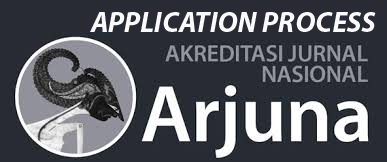PENGARUH TERAPI MUSIK ROHANI DENGAN STATUS HEMODINAMIK PADA PASIEN DI RUANG ICU
DOI:
https://doi.org/10.63520/ncj.v3i2.664Keywords:
ICU, Hemodynamic Status, Spiritual Music TherapyAbstract
The Intensive Care Unit, ICU, is a hospital unit with staff and equipment to manage patients with life-threatening diseases, trauma, and complication due to organ or system dysfunction. The care is important because the patients may survive with intensive care and medication. Hemodynamic changes influenced the patient's conditions in ICU so specific monitoring and therapeutic actions are important. One of the therapies to apply is spiritual music therapy to improve the life quality of patients through the nervous system of the patients. This mechanism improves the psychological level, sleeping quality, and convenience of the patients due to the decreased beat rhythm. This research determined the influence of spiritual music therapy on the hemodynamic status of the patients. This pre-experimental research applied one group pretest-posttest without a control group. The sample consisted of 34 respondents taken with purposive sampling. The applied statistic test was paired t-test if the results were normal, starting from the blood pressure and the pulse. If the results were not normal, the researcher would apply the Wilcoxon test for saturation and respiratory rate. The results showed the p-value of systolic, diastolic, and oxygen saturation was 0.004 lower than 0.05; pulse with 0.005 lower than 0.05; and respiration with 0.263, higher than 0.05. The results showed the influence of spiritual music therapy on systolic, diastolic, oxygen saturation, and pulse. On the other hand, respiration did not influence the patients after providing spiritual music therapy.
References
Ayed, A., Sayej, S., Harazneh, L., Fashafsheh, I., & Eqtait, F. (2015). The Nurses' Knowledge and Attitudes towards the Palliative Care. Journal of Education and Practice, 6(4), 91-99.
Benken. (2018). CCSAP book 1 medical issues in the ICU. Leneza, Kansas United States American College of Clinical Pharmacy
Bruijins. (2014). The value of the difference between ED and prehospital vital signs in predicting outcome in trauma. Emergency Medicine, 31, 579-582
Dinkes Jateng. 2018. Profil kesehatan provinsi jawa tengah tahun 2017. Dinkes Jateng. Semarang
Gorgui. (2014). Hypertension as a Risk Factor For Ischemic Stroke in Women. The Canadian Journal of Cardiology
Hartoyo, M., & Wulandari, M. (2016). Efektifitas ROM Aktif dan Mobilisasi Dini Terhadap Kembalinya Peristaltik Usus pada Pasien Post Operasi Abdomen dengan General Anestesi di RSUD Kota Saltiga. Karya Ilmiah.
Hidayati Afif N dkk. (2020). Gawat Darurat Medis dan Bedah. Surabaya : AirlanggaUniversity Press
Jobe. (2016). Lung Development and Maturation. 8th edition. 407-18..Mosby Elsavier.
Kemenkes RI. (2015). Riset Kesehatan Dasar RISKESDAS. Jakarta: Balitbang Kemenkes RI
Kurniawan, A., Kristinawati, B., & Widayati, N. (2019). Aplikasi Foot Massage untuk Menstabilkan Hemodinamik di Ruang Intensive Care Unit Rumah Sakit Umum Pusat dr . Soeradji Tirtonegoro Klaten. University Research Colloqium, 10, 510–515. http://repository.urecol.org/index.php/proceeding/article/view/684/667
Lestari, W. (2015). Pemberian Terapi Musik Terhadap Status Hemodinamika Pada Pasien Koma Pada Asuhan Keperawatan Tn. S Dengan Stoke Hemoragik Di Ruang High Care Unite (HCU) Anggrek II rsud Dr. Moewardi Surakarta. Stikes Kusuma Husada Surakarta
McMulan. (2013). Prevalence of prehospital hypoxemia and oxygen use in trauma patients. Military Medicine. 178(10): 5.
Morsy, W. Y. M., Elfeky, H. A., & Mohammed, S. E. (2014). Nurses’ knowledge and practices about palliative care among cancer patient in a university hospital-Egypt. medical decision-making, 24.
Nuraeni (2019). Hubungan Usia dan Jenis Kelamin Beresiko dengan Kejadian Hipertensi di Klinik X Kota Tangerang. Jurnal JKFT, 4 (1), 1-6
Oktaviani. (2017). Hubungan Dukungan Keluarga dengan Kualitas Hidup Lanjut Usia Pasca Stroke di Wilayah Kerja Puskesmas Gajahan Surakarta. STIKES Muhamadiyah Surakarta, Skripsi thesis Universitas Muhammadiyah Surakarta
Palupi dan Rahmawati. (2015). Comparison of clinical response between nicardipine and diltiazem in hypertensive emergencies. J Manag Pharm Practice; 5(3):172-7
Pasiak.(2019). Unlimited Potency of The Brain: Kenali dan Manfaatkan Sepenuhnya Potensi Otak Anda yang Terbatas. Bandung: PT Mizan
Ristanto dan Zakaria. (2017). Hubungan Respiratory Rate (RR) dan Oxygen Saturation (SpO2) Pada Klien Cedera Kepala. Jurnal Kesehatan Hesti Wira Sakti, 5(2), 85-90.
Saseen dan MacLaughlin. (2016). Hypertension dalam Pharmacotherapy Handbook 7th Edition, The McGraw-Hill Companies Publisher, Chicago, United States of America
Taslim, E., & Maskoen, T. T. (2016). Pola Kuman Terbanyak Sebagai Agen Penyebab Infeksi di Intensive Care Unit pada Beberapa Rumah Sakit di Indonesia. Majalah Anestesia Dan Critical Care, 34(1), 33–39.
Tumbuan, F. C., Kallo, V. D., Studi, P., Keperawatan, I., Kedokteran, F., & Ratulangi, U. S. (2017). Tingkat Kepercayaan Keluarga Pasien Di Intensive Care Unit ( Icu ) Rsu Gmim. E-Journal Keperawatan (e-Kp, 5)
Wahyuni. (2013). Pengalaman Ibu dalam Melakukan Perawatan Metode Kanguru. Jurnal Keperawatan Padjajaran. Vol 1. No 3
WHO. (2017). Mental disorders fact sheets. World Health Organization. http://www.who.int/mediacentre/factsheets/fs396/en/. Diakses pada tanggal 28 Desember 2022
Downloads
Published
Issue
Section
License
Copyright (c) 2025 Nursing Care Journal

This work is licensed under a Creative Commons Attribution-ShareAlike 4.0 International License.





